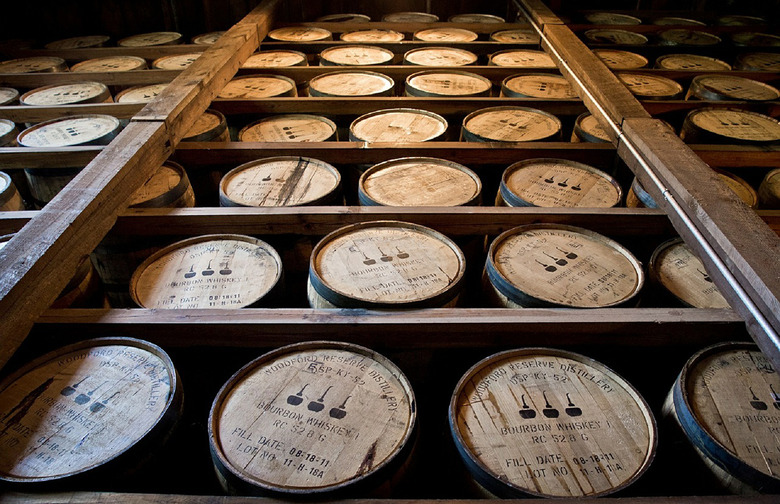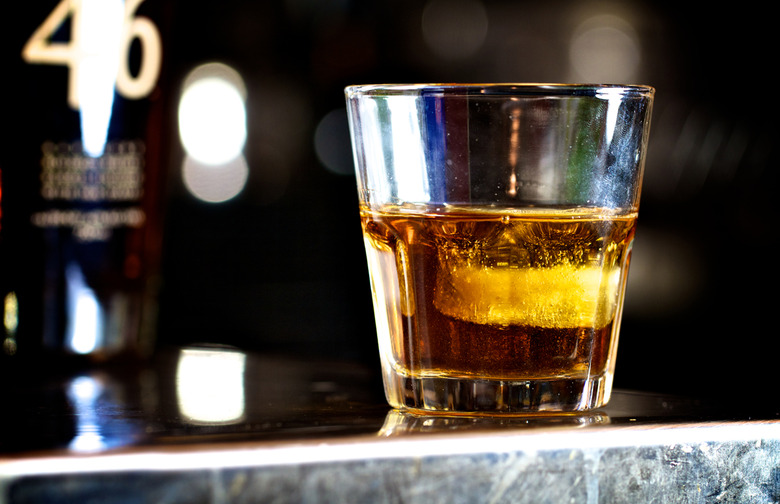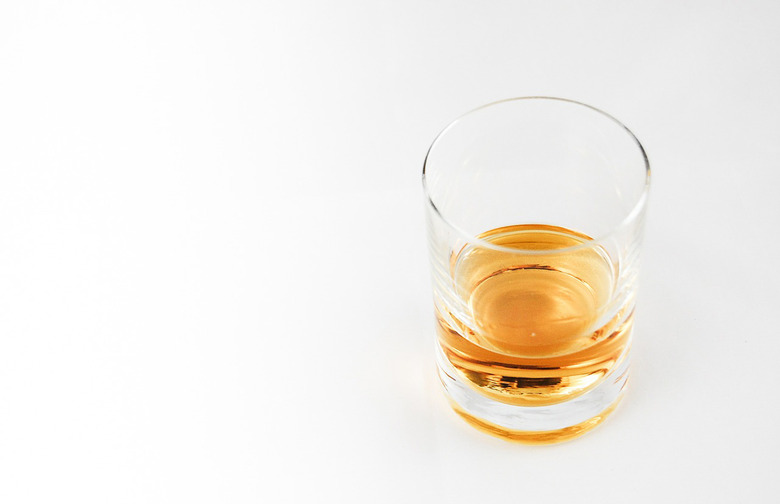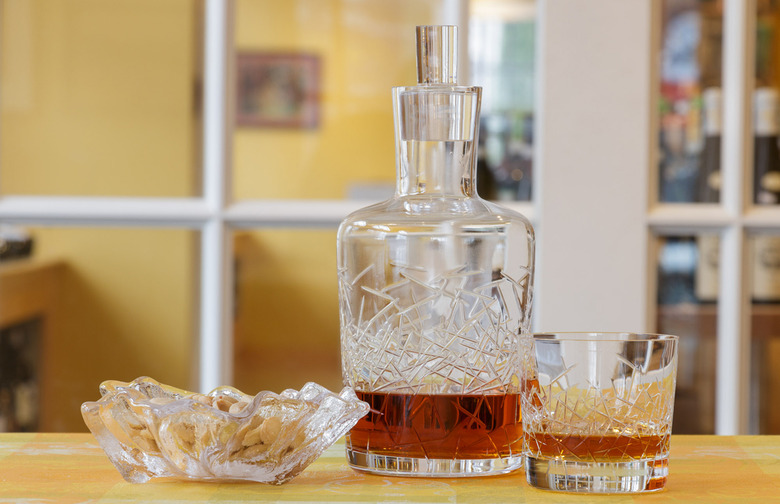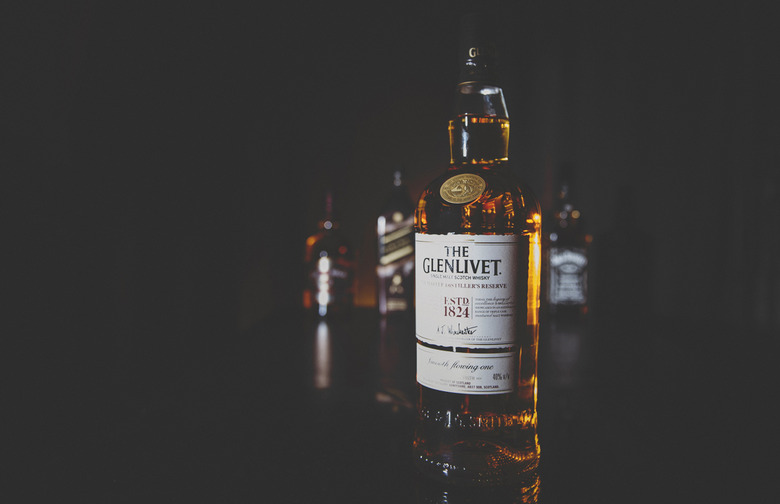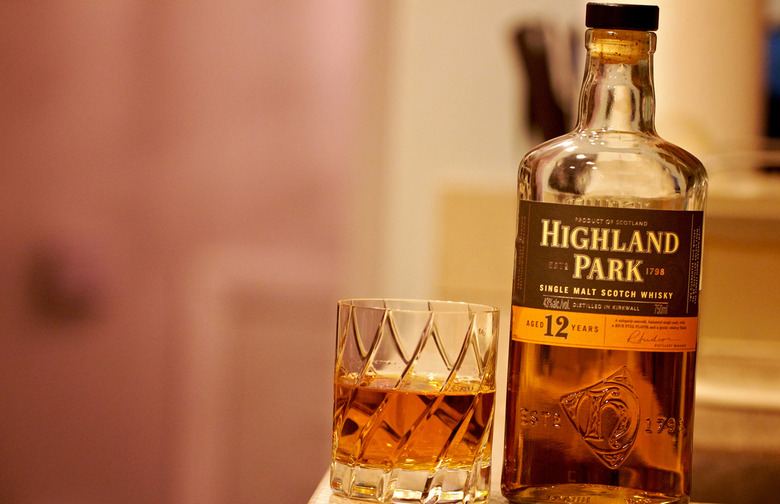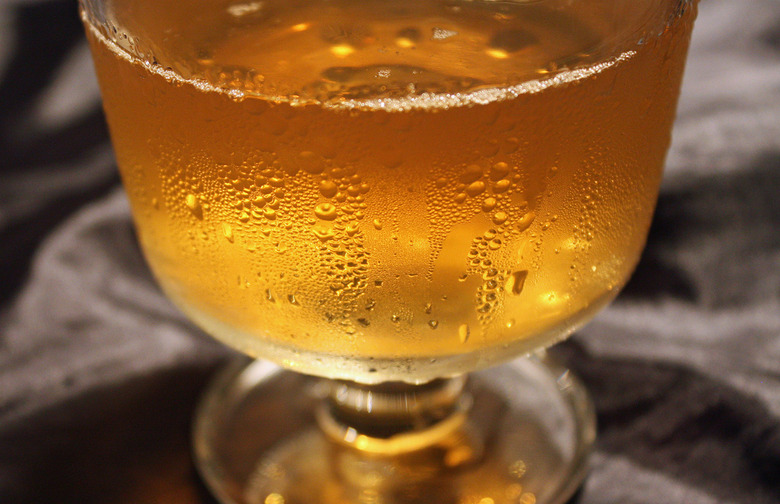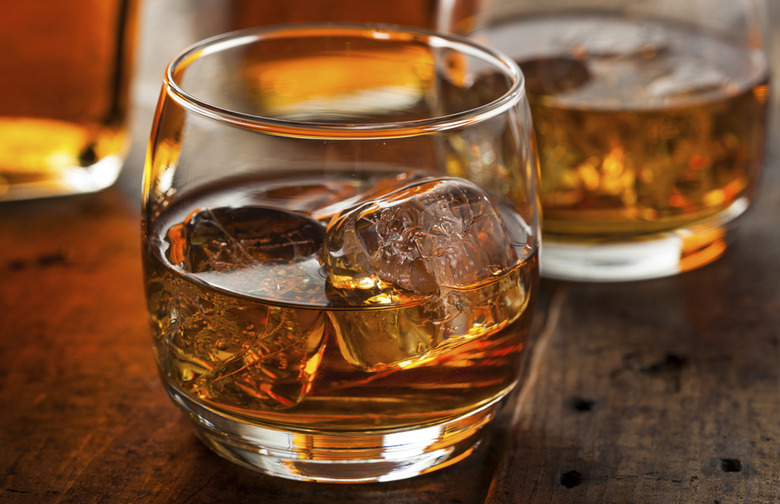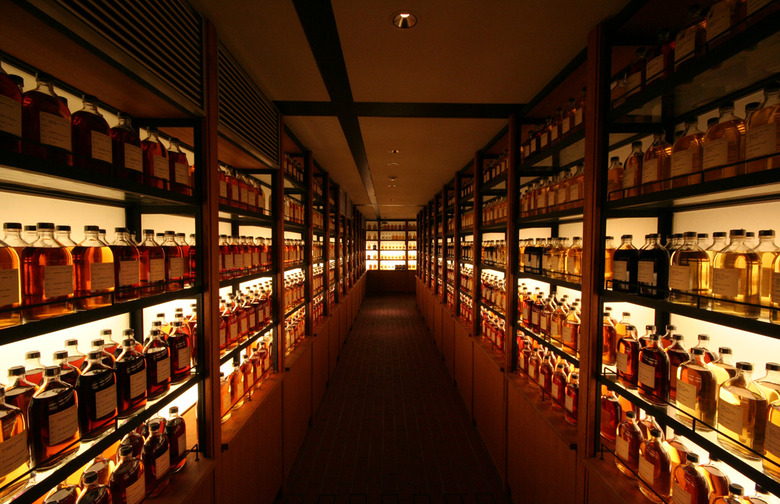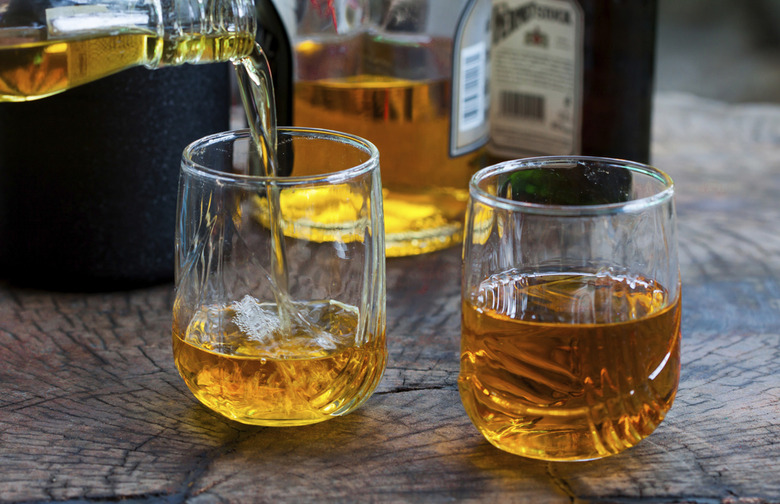10 Things You Didn't Know About Whiskey Slideshow
The oldest existing whiskey is believed to be a 400-milliliter bottle of Glenavon Special Liqueur Whisky. Bottled between 1851 and 1858,it currently holds the Guinness World Record for 'World's Oldest Whisky,' and was auctioned off for an extraordinary $16,519.88!
Angels Imbibe, Too
Whiskey is aged in barrels, which are porous, and gradually loses volume through evaporation at a rate of two to four percent a year. This is jokingly known as the "angel's share" or "angel's tax." You can see the results of this process if you look at the ceiling in an aging cellar: it will have been turned black by the rising alcohol vapor.
Color Blind
Whiskey is completely clear in its natural, unaged form. The color and flavor is acquired from the oak casks during the aging process as well as from additives like treated caramel, which influences color, not taste. Less expensive whiskies tend to contain caramel.
Let’s Spell It Out
The spelling of this spirit can be a confusing. Rule of thumb: When referring to bottles hailing from Canada, Japan, or Scotland, it's whisky. American, Irish, and English whiskies are called whiskey. According to legend, Scots spell it without the "e" because they believe more vowels waste good drinking time. Seems like maybe the Canadians and Japanese agree.
Single Malt Scotch Is Scarce
Interest in single malt scotch has significantly increased. Sales have more than doubled since 2004. The problem with that single malts are usually bottled with at least 10 years of age, so as demand exponentially increases, the actual product is becoming less and less available. One option some distillers have chosen is releasing single malts without an age stamp. This gives blenders leeway to adjust to gaps in inventory but there's a chance younger single malts may be sold.
Scotch Whisky Is Huge Business Overseas
According to the Scotch Whisky Association, Scotland generates an impressive £125 (equivalent to $178.30) per second through whisky exports.
There's More to It Than Scotch and Bourbon
Whiskey (or whisky) , as noted, is now distilled in at least 23 countries worldwide. The number one producer is Scotland. Next comes America, followed by Japan (whose Yamazaki 2013 Bottling Sherry Cask Single Malt was named best whisky in the world by The Whisky Bible), and then Ireland.
To Ice or Not to Ice?
Scotch on the rocks is a popular drink, but aficionados believe that ice dulls the flavor of whiskey. If you must add something to your drink, opt for spring water. A small splash will prevent the strong alcohol content from numbing your senses and will enhance the aroma and flavor of the whiskey. That said, you should enjoy the spirit as you prefer — we won't judge.
Whiskey Is Already Diluted
Bourbon must be barreled at an alcoholic strength of 62.5 percent or less; scotch is sometimes slightly higher. Both are typically diluted with water to what is considered an optimal drinking strength, generally 40 percent (80 proof) for bourbon and 40 or 43 percent (80 to 86 proof) for scotch—though bourbon is also bottled at higher proofs (the common ones are 86, 90, and 100), and scotch is sometimes sold at cask strength (which can go as high as 120 proof or even slightly more).
Whiskey Starts Life as Beer
Whiskey is, in effect, distilled beer without hops. The mash — actually called "distiller's beer" — from which whiskey is distilled is made of malted grain, yeast, and water, just like beer. It is said that for its first two days of life, whiskey and beer are virtually the same thing. Then the distillation process comes into play, turning the mash into spirits just as wine is distilled into brandy.
